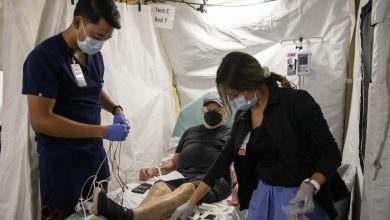Historic Breakthrough: Huntington’s Disease Successfully Treated for the First Time

For decades, Huntington’s disease (HD) has stood as one of the most devastating inherited neurological disorders—relentlessly progressive, incurable, and fatal. Families carrying the defective HTT gene mutation have lived with the grim certainty that if one parent has the condition, each child has a 50% chance of inheriting it. Until now, treatment efforts have been limited to symptom management rather than true disease modification.
But a historic breakthrough has finally changed this trajectory. For the first time in medical history, researchers have successfully treated Huntington’s disease, offering hope to millions of families worldwide.How the treatment works, what it means for patients today, and what the future may hold.
Understanding Huntington’s Disease
To appreciate the scale of this historic breakthrough, it’s important to understand the nature of Huntington’s disease itself.
What is Huntington’s Disease?
Huntington’s disease is a genetic neurodegenerative disorder caused by an expanded CAG trinucleotide repeat in the HTT gene located on chromosome 4. This faulty gene produces an abnormal form of the huntingtin protein, which progressively damages Mental health—especially in regions responsible for movement, cognition, and emotional regulation.
Symptoms of Huntington’s Disease
The disease typically emerges in mid-adulthood, though juvenile-onset cases also occur. Key symptoms include:
- Motor dysfunction: involuntary jerking (chorea), rigidity, impaired coordination, and difficulty speaking or swallowing.
- Cognitive decline: memory lapses, difficulty concentrating, impaired judgment, and eventual dementia.
- Psychiatric symptoms: depression, irritability, inflamation,lower anxiety, and, in some cases, psychosis.
Once symptoms begin, progression is inexorable. Most patients survive only 15–20 years after onset. Unlike other neurological disorders, Huntington’s is both neurodegenerative and dominantly inherited, meaning every child of an affected parent has a coin-flip chance of inheriting the mutation.
The Treatment Challenge
Previous approaches—including dopamine blockers, antidepressants, and physical therapy—addressed only symptom management, not the root cause. The ultimate goal has always been gene silencing or correction—to stop the mutant huntingtin protein at its source.
The Road to the Historic Breakthrough
Scientists have pursued Huntington’s disease therapies for decades. Early attempts focused on neurotransmitter modulation and neuroprotective drugs, but none slowed the disease course.
The first sparks of hope came with gene-targeting technologies:
- RNA interference (RNAi): designed to silence faulty genetic messages.
- Antisense oligonucleotides (ASOs): small DNA-like molecules that bind to mutant RNA transcripts, blocking harmful protein production.
- CRISPR-Cas9 gene editing: offering a way to directly “cut out” or correct defective DNA.
While promising, these approaches faced huge challenges—how to deliver therapies safely to the brain, how to selectively target the mutant gene without harming the healthy version, and how to demonstrate efficacy in humans.
The Historic Breakthrough Explained
In 2025, researchers achieved what many once believed impossible: a clinically proven therapy that modifies the course of Huntington’s disease.
What the Treatment Involves
The successful therapy combines advanced antisense oligonucleotide (ASO) technology with targeted delivery systems capable of crossing the blood–brain barrier. Administered via periodic intrathecal injections (into the spinal fluid), the therapy silences the mutant HTT gene selectively, reducing toxic huntingtin protein production.
Clinical Trial Success
In a landmark Phase III clinical trial, the therapy demonstrated:
- Substantial reduction in mutant huntingtin protein levels in cerebrospinal fluid.
- Slowed progression of motor, cognitive, and psychiatric symptoms compared to placebo.
- Improved quality of life scores reported by patients and families.
- Acceptable safety profile, with mild and manageable side effects.
For the first time, Huntington’s patients experienced a halt in decline, with some even showing modest improvements in function—a feat unimaginable only a few years ago.
Why This is Historic
This achievement is not simply incremental—it represents a paradigm shift:
- The first disease-modifying treatment for Huntington’s disease.
- Proof of principle that gene silencing therapies can be safely and effectively delivered to the human brain.
- A model for treating other dominantly inherited neurodegenerative diseases, such as certain forms of ALS and spinocerebellar ataxias.
Human Stories Behind the Breakthrough
Scientific triumphs resonate most when seen through the lives they transform.
Take Sarah, a 38-year-old mother who tested positive for the HTT mutation at 25. Watching her father deteriorate, she lived in fear of her own inevitable decline. When early trial data showed stabilization of symptoms, Sarah described it as “like stepping back from the edge of a cliff I was already falling from.”
Or David, a 19-year-old with juvenile-onset Huntington’s, whose early motor symptoms had robbed him of independence. After receiving treatment, his progression slowed dramatically, allowing him to continue university studies—something his doctors once deemed impossible.
Such stories illustrate why this historic breakthrough is not just about science, but about giving people back futures once thought lost.
Implications for Science and Medicine
The successful treatment of Huntington’s disease carries profound implications.
1. A New Era of Neurology
For decades, neurodegenerative diseases like Alzheimer’s, Parkinson’s, and ALS have resisted effective disease-modifying therapies. Huntington’s success proves that genetic brain diseases are not beyond reach.
2. Validation of Antisense Therapy
While ASOs have been explored in spinal muscular atrophy (SMA) and other conditions, Huntington’s represents one of the most complex targets ever achieved. This validates ASOs as a platform technology for genetic brain disorders.
3. Hope for Rare Disease Communities
Beyond Huntington’s, thousands of rare genetic diseases exist with no cure. This breakthrough demonstrates that with persistence, investment, and innovation, even the most intractable diseases can be tackled.
Addressing Challenges Ahead
While groundbreaking, this therapy is not yet a universal cure. Several hurdles remain:
- Accessibility: Intrathecal injections are specialized procedures requiring advanced health care rate hike. Expanding global access will be crucial.
- Cost: Cutting-edge gene-targeting therapies are notoriously expensive, raising questions about affordability and insurance coverage.
- Long-term effects: While short-term safety is established, researchers must monitor patients for potential long-term immune or neurological effects.
- Early diagnosis: The therapy is most effective when given before extensive brain damage occurs, highlighting the importance of genetic testing and early intervention.
The Ethical Dimension
The historic breakthrough also sparks important ethical debates:
- Genetic testing dilemmas: Should at-risk individuals be encouraged to undergo predictive testing now that treatment exists?
- Reproductive choices: With gene-editing and preimplantation genetic diagnosis, will families carrying the HD gene feel pressured to avoid passing it on?
- Equity of access: Will treatment be available to patients in low-income regions, or only to those in wealthy nations?
Balancing these ethical challenges will be as important as the science itself.
A Vision of the Future
Looking forward, experts envision several possibilities:
- Preventive Treatment: Administering ASOs to gene-positive individuals before symptoms appear, potentially preventing Huntington’s entirely.
- Combination Therapies: Using ASOs alongside stem cell therapy or neuroprotective drugs for enhanced outcomes.
- Gene Editing Cures: CRISPR-based approaches may one day permanently correct the HTT mutation, offering a one-time curative treatment.
- Applications Beyond Huntington’s: Lessons learned here may accelerate progress against Alzheimer’s, Parkinson’s, and other neurodegenerative conditions.
Global Reaction to the Breakthrough
The announcement of successful Huntington’s treatment has been hailed worldwide:
- Medical journals describe it as “a triumph of precision medicine.”
- Neurologists call it “the dawn of a new era in neurogenetics.”
- Patient advocacy groups celebrate it as “a long-awaited turning point.”
- Families around the globe express cautious optimism, many seeing hope for the first time in generations.
This collective response underscores why the achievement is rightly called a historic breakthrough.
Conclusion:
For decades, Huntington’s disease symbolized the cruelest face of genetic fate—inescapable, untreatable, and devastating across generations. Today, thanks to a historic breakthrough, that narrative has changed.
The successful treatment of Huntington’s disease represents more than a scientific milestone. It is a story of perseverance by researchers, courage by patients, and hope for humanity. It signals that we are entering a future where genetic destiny no longer equals inevitable decline.




